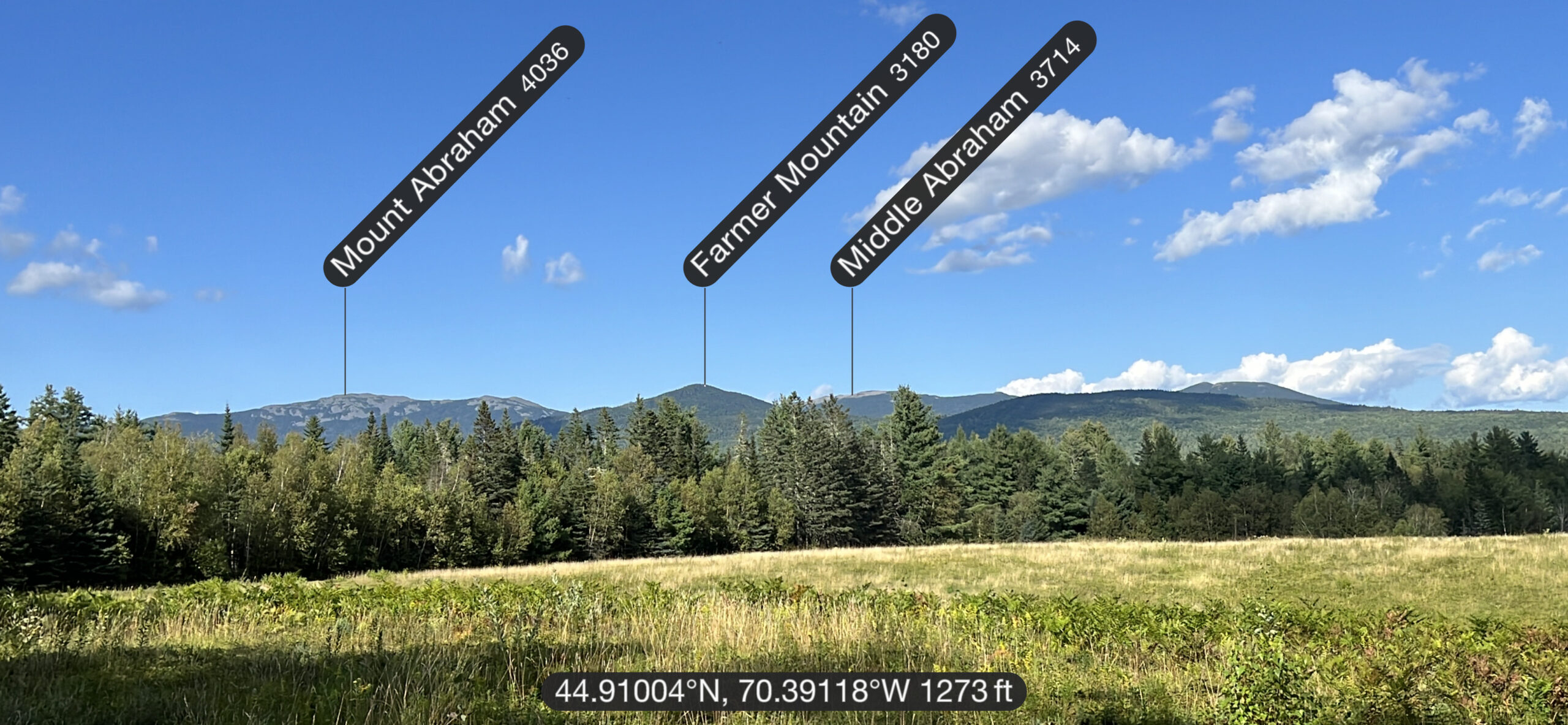By Lloyd Griscom
Sunday, January 11, 2015 – As a local landowner with a camp near the Appalachian Trail in Madrid Township, I became aware of a desire to protect the backcountry area around the headwaters of the Orbeton Stream.
I knew this was a special place — my uncle once owned forestland here, and despite living all over the country, this area is what we consider our home. I started taking people who had any interest in a hike to the summit of Saddleback Jr., which overlooks the Orbeton.
One such group was the Maine Appalachian Trail Land Trust.
Late in 2006, I joined the board of directors of the Land Trust and, with many others, started to advocate for the protection of the Orbeton Stream area. The parcel, which consists of roughly 5,800 acres of working forest, features outstanding mountain vistas, pristine mountain streams, an ample road system, and recreational use and opportunities for ATVs, snowmobiles, cross-country skiers, hikers, hunters, birdwatchers, and fishermen.
One of the most memorable stretches of the Appalachian Trail runs along the northern border of the property and the experience of wildness it provides hikers is protected by the forests of Orbeton.
This beautiful, wild expanse of land was specifically indicated by Peter S. McKinley, conservation biologist at The Wilderness Society, as of critical importance as Maine enters a new era of climate change, forest products industry upheaval, and an aging demographic. McKinley’s ecological study of the High Peaks for the Maine Appalachian Trail Land Trust led to a growing understanding of the importance of this area and the creation of the High Peaks Initiative.
At about the same time, a group of local folks (myself included) formed the High Peaks Alliance with a mission to ensure and enhance public recreational access and opportunities in Maine’s high peaks. Their objective was public access and finding a way to coordinate the various interests so that we could all get 80 percent of what we wanted by cooperating.
Early innovative and collaborative work by Chris Beach and others produced a compromise 100-foot corridor that was transferred from the National Park Service to Maine’s Bureau of Public Lands, permitting a legal, multi-use route over the Appalachian Trail at Eddy Pond known as the Saddleback Connector.
That crossing permitted the creation of the Moose Loop ATV System and settled some difficult issues.
Sen. Susan Collins had language in a bill on the Appalachian Trail Corridor that helped bring resolution to that issue and her support for this project was essential to its success and funding.
An earlier 2010 Forest Legacy Project in the high peaks failed to get funding. The Trust for Public Land was brought in because of its larger capacity to see conservation projects to completion, like the one we are celebrating.
The key factor in conserving Orbeton Stream is the collaboration among the various groups, all of whom seemed to have divergent interests: forest products versus ecology, motorized trail use versus. non-motorized, private ownership versus state ownership. In the end, what we realized by coming to the table and working together was that conservation doesn’t have to be about “getting what you want” – it can and indeed is about “getting what’s best for everybody.”
Would some environmentalists have been happier with an ecological reserve without ATVs and loggers? Maybe. Would some ATV and snowmobile riders have been happier with continued private ownership of the land? Maybe. But every single outdoor club, group, or organization in the area supported the project and is excited to get out on the land with the rest of us.
The ITS 84/89 snowmobile trails, the Moose Loop ATV system, the Fly Rod Crosby Trail, and the new Appalachian Trail Berry Pickers side trail all benefit from the guarantee of public access, not to mention Linkletter Brothers Timberlands getting support for its working forest operations.
In a celebration of the Saddleback Connector, Collins said, “In Maine, the environment is the economy.”
Conservation is a form of economic development that protects our brand. Conservation benefits all of us, and the Orbeton Stream project is an excellent model for the future of Maine.
Lloyd Griscom serves on the board of directors of the Maine Appalachian Trail Land Trust. He owns and operates Peace and Plenty Organic Blueberry Farm in Phillips with his wife. He is also vice president of High Peaks Alliance and a trustee of the Sandy River Land Trust.




